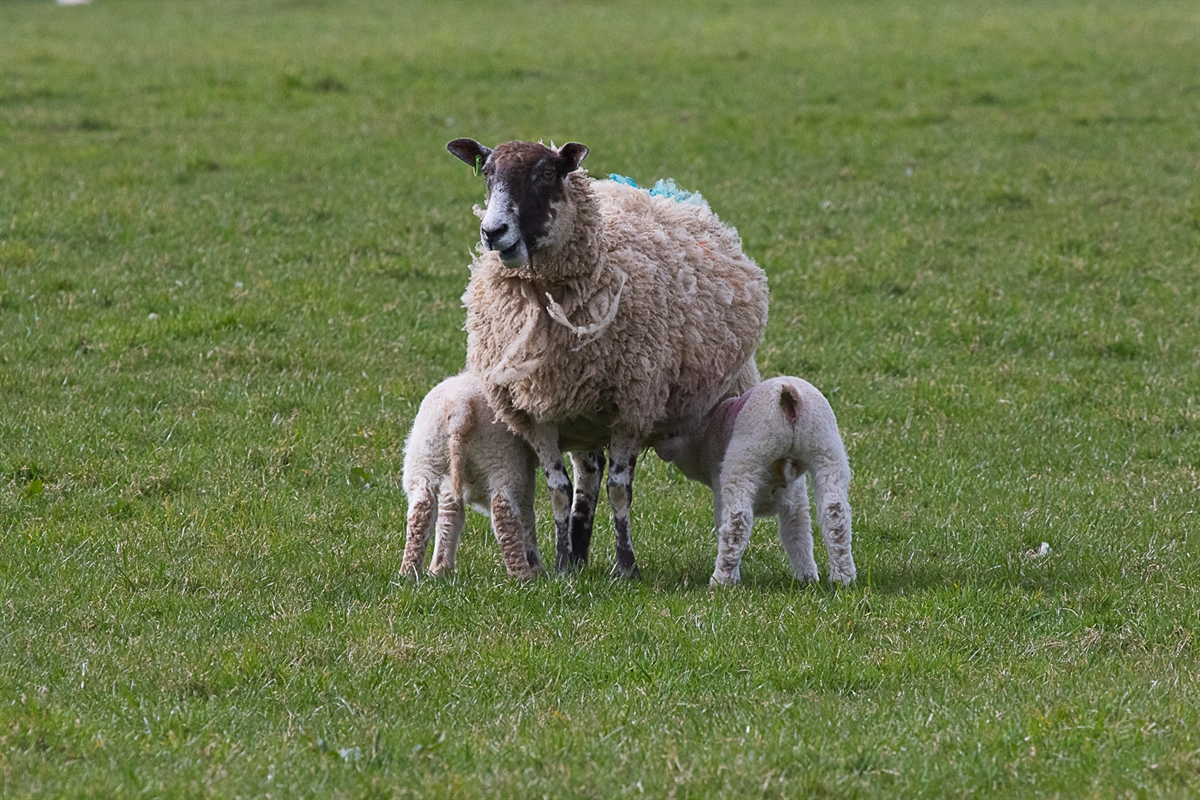7 steps to get the best from your flock

When it comes to raising livestock, there can be a fine line between productivity and profitability and getting it right can start earlier than you think.
From lambing nutrition to standards of husbandry and overall flock health, careful attention across the board pays dividends in the long run. Lamlac are leading industry experts in early life lambing nutrition and milk replacers but our expertise extends beyond the science, with a whole host of practical advice to help you achieve the biggest returns on your flock.
Here are just a few of our top tips.
- Pay attention to pregnant ewe nutrition
Keeping your ewes in tip-top condition for the last six weeks before lambing should be a huge priority for you and your team. 70% of foetal growth takes place during this period, so if you get feeding wrong, it can have serious consequences for both ewe and lamb. To maximise the potential of high lamb survival rates, good birth weights and superior quality ewe colostrum, we recommend group-feeding ewes according to their scanning results and condition score.It could even be worth asking your vet to take blood samples from ewes, four to six weeks prior to lambing, to ensure their diet is delivering all their nutritional needs and you can make any adjustments necessary.

- Check your flock health
Ensure you’re up to scratch on essential disease management interventions pre and post lambing, through consultation with your vet. Don’t forget to boost your ewes’ clostridial disease and pasteurellosis cover four to six weeks pre-lambing. Separate and treat any lame sheep well before housing - following up / checking ewes post-lambing before returning to the field and check, too, the protocols for dealing with any abortion problems, scours or joint ill.
- Focus on housing hygiene
If you lamb indoors, it’s important to thoroughly clean and disinfect sheds and barns at least two weeks prior to lambing. Plenty of clean, dry bedding should be provided and topped up at regular intervals to reduce the occurrence and spread of lameness and other infections such as watery mouth, joint ill and coccidiosis. Allowing your ewes adequate space is also imperative in the prevention of stress and the spread of disease. The recommended amount of trough space is1.2m2 – 1.4m2 and 45cm for the average 70kg ewe. In addition the provision of good lighting will prevent the need for stirring up the flock in order to make your checks, so be sure to update your lighting system or replace any bulbs.
- Make sure your staffing’s sorted
Whether you’re making good use of a local agricultural student or two or efficient use of the team you’ve already got, it’s important to review and evaluate the level of help you need and how you utilise your resources – particularly with Coronavirus restrictions and safety measures in mind. Consider your staffing rota, task allocation and sanitisation procedures.
Finally, as when taking on any new staff, be clear on the skills and experience you are looking for in any employee and ensure any new recruits are informed of expectations and protocols from the start.
Some great time saving tips for your team can be found >>> here
- Stock up on supplies
In the ‘lull’ between lambing seasons it’s easy to forget about the equipment and products you got through last time. But once lambing’s in full swing, there will be very little time to think, never mind nip out for supplies, so make sure you’re stocked up well in advance. Here’s our checklist to get you started:
- Disinfectant for lambing pens
- Iodine for navels
- Castration rings
- Feeding tubes and syringes
- Marker sprays
- Sterilisation equipment
- Lamlac milk replacer
- Lamlac colostrum replacer
- Feeding bottles and / or automatic feeder and teats – check out the Volac automatic eco lamb feeder or Ewe 2 Feeder
- Hand sanitiser for your workforce
- Plenty of teabags & biscuits for those late-night lambing call outs.

- Set targets
Setting targets for your lamb losses and benchmarking against previous years can help you identify any problems in the rearing of your flock. The mere mention of record keeping can inspire a sense of dread for some, but the system doesn’t have to be overly sophisticated or complicated in order to gain invaluable learnings to take forward in your lambing career.Industry benchmarks suggest you should be aiming for less than 15% of lamb losses, but top performing flocks are achieving closer to 10%.
Targets for reducing lamb losses:
- Less than 5% from scanning to lambing
- Less than 5% during lambing and the first week of life
- Less than 2% from the first week after birth until weaning
- Less than 2% from weaning until sale or retention
Ask your vet for advice if:
- Ewe losses are more than 3%
- Lamb losses are more than 15%
- More than 2% of your ewes are barren at scanning
- Implement systems for surplus lambs
Make sure you’ve got an effective system in place for the raising of your inevitable surplus lambs. While bottle-feeding is fine on a small scale, when larger numbers are involved it can be a massive drain on time and resources so feeding ad-lib is a logical way to go. Systems such as our (or for larger numbers the Volac Eco Feeder) will help reduce labour and promote better lamb growth rates, freeing you up to focus elsewhere.
You can find out all you need to know about the feeding of milk formula and lamb nutrition - including mixing, quantities, methods and more >>> here
Or on our ‘How much Milk replacer’ blog >>> here
Preparation is pertinent to profitability as well as ensuring the overall health and wellbeing of your flock. So taking on board these seven tips and reviewing existing working practices in advance are sure to prove invaluable for the lambing season ahead.